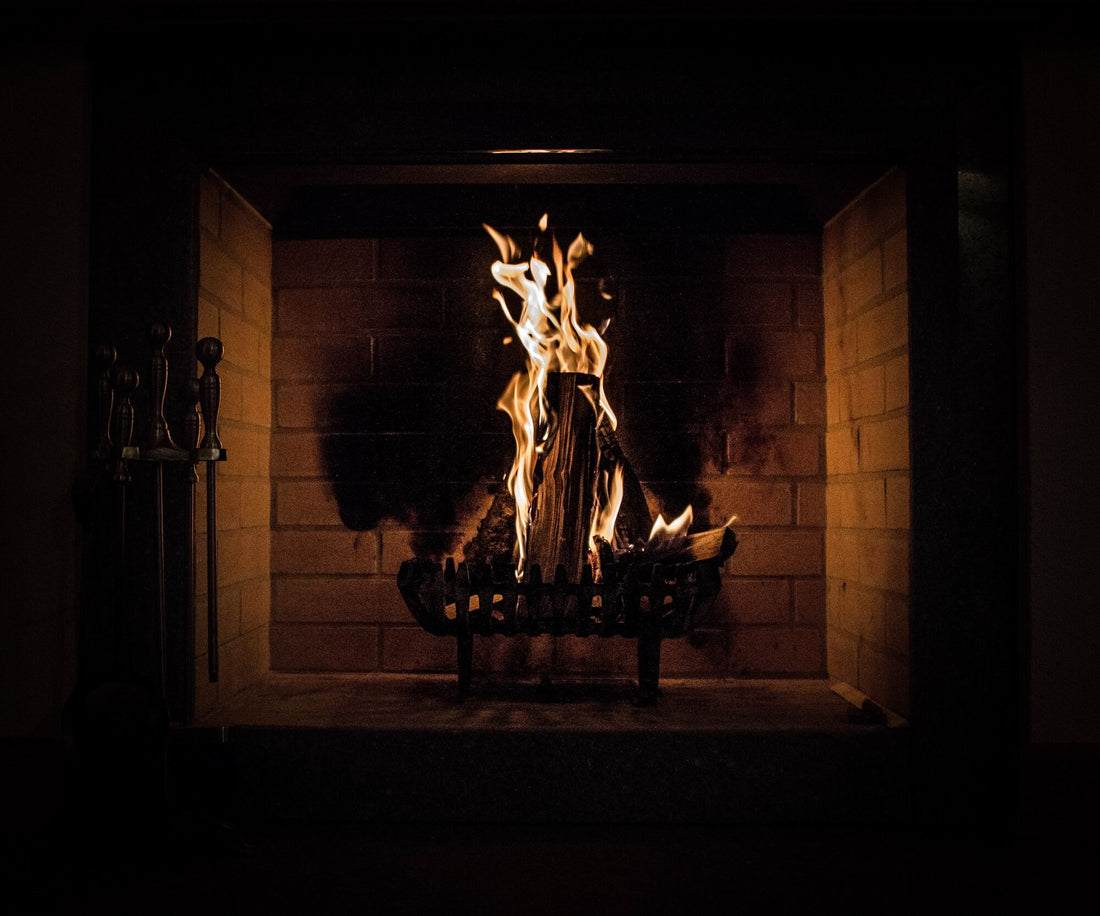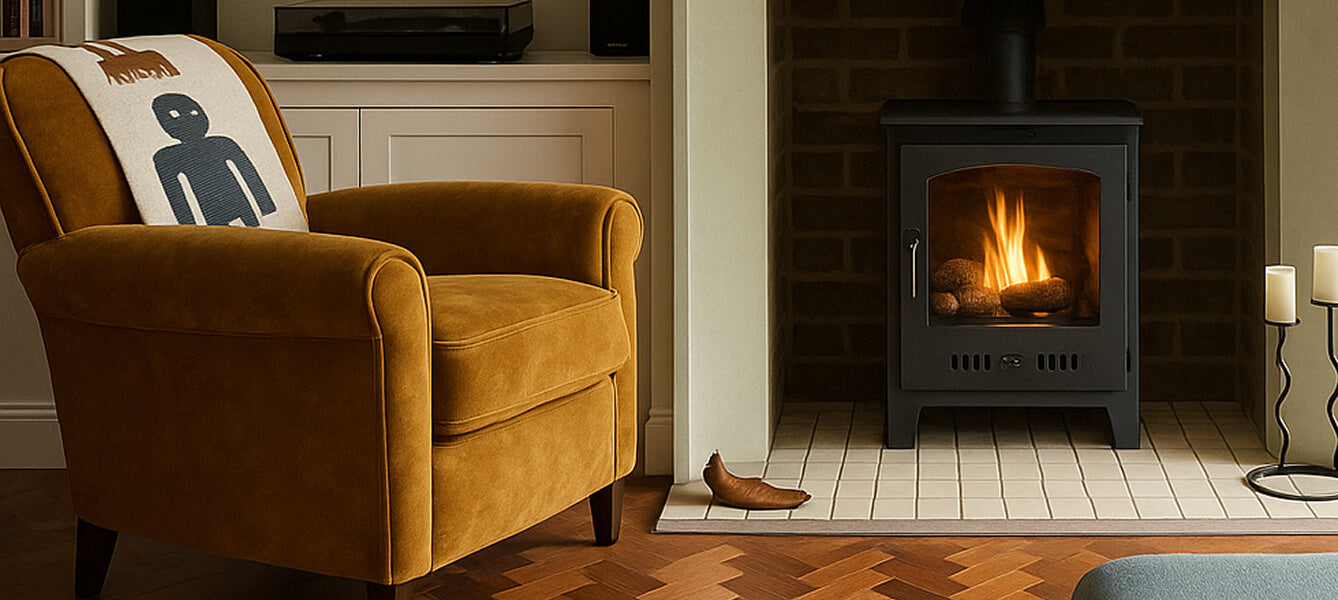
The Importance of Ventilation for Fireplaces: Ensuring Proper Air Flow
There are lots of things you need to think about when installing a log burner, stove, or other fuel-burning appliance in your home.
Where will you install it? How big will it be? Who will install it for you?
However, it’s also important to consider ventilation. It’s vital to ensure there’s good airflow not just directly around your fireplace but across your entire home. This doesn’t just ensure you stay safe, but that you get the best experience when you light your fire.
So, what do you need to know about ventilation for fireplaces? This article will explain the regulations and how to improve ventilation for health, safety, and comfort.
Why is ventilation for fireplaces so important?

Ventilation for fireplaces is essential for two key reasons.
Firstly, modern homes (built from about 2006 onwards) have been constructed to be well-insulated and air-tight. While this is great for keeping your home nice and warm, it makes it harder for contaminants in the air to leave the building.
This means dust, dirt, soot, and other harmful chemicals produced by your fireplace stick around your home for longer, resulting in poor air quality and potentially causing health issues.
Secondly, a steady flow of oxygen is needed for combustion to take place. If there isn’t enough oxygen available, carbon monoxide is produced. High levels of carbon monoxide can cause health issues and even be fatal.
Are there any ventilation regulations for fireplaces?

Yes, there are ventilation requirements for log burners and other types of fireplaces in the UK.
The English Building Regulations specify that there needs to be an adequate supply of air for combustion appliances like fireplaces and stoves.
The ventilation requirements depend on the air permeability of your home – how well air can flow between the inside and outside of your building. In an air permeability test, the ventilation sources in your home are sealed up and a fan is set up in a doorway or window.
The amount of air flowing through the fan is then measured. There are many companies that can carry out this testing for you.
If the air permeability of your home is more than 5 m3/ (h m2), you only need ventilation if your fireplace has a heat output of more than 5kW. For a 5kW burner, you need 550mm2 of ventilation and an additional 550mm2 for every additional kW of heat output generated.
If the air permeability of your home is less than 5 m3/ (h m2), ventilation is needed for all fireplaces. For a 1kW burner, you need 550mm2 of ventilation and an additional 550mm2 for every additional kW of heat output generated.
Please note that the guidelines in Wales and Scotland are slightly different.
How can you ventilate a fireplace?

Ventilation for log burners, fireplaces, and stoves is essential. But how do you go about ensuring there’s enough ventilation in place in your home?
If you have a log burner or stove with a chimney or flue, you might think this provides adequate ventilation on its own.
However, this isn’t the case. Without a source of ventilation, there is the risk that smoke and soot can come back down your chimney or flue into your home!
Similarly, while mechanical ventilation can be great for removing poor-quality air and replacing it with fresh air, it’s not the best solution for ventilating your fireplace. This is because you’ll not always have it turned on, and the quality of the ventilation it provides depends on the condition of the filters and other elements.
The best way to ensure good ventilation is by drawing a permanent source of fresh air from outside your home.
An outside air vent or external air kit is a good starting point. An outside air vent is a tube that brings air from outside your home to your fireplace. However, outside air vents are not compatible with every type of fireplace or stove.
Other types of air vents can be fitted into your wall. When installing these air vents, it’s important to consider where they are located. It’s best to place them as close to your fireplace or stove as possible. These vents must also be permanent, meaning they can’t be closed.
Not sure of the best way to ventilate your fireplace? Your installer will be able to recommend the optimal way to ensure good airflow.
Will ventilation make my room cold or increase my energy bills?

If ventilation is placed and fitted correctly, it won’t make your room any colder. You might notice a small flow of air if you stand or sit close to a ventilation source when your fireplace or stove is on, but nothing too obvious.
Some people worry that ventilation will make their heating bills more expensive, but good ventilation can actually lower your bills. This is because well-ventilated air is easier to heat than poor-quality, stagnant air.
How to ensure good ventilation for stoves and fireplaces

There are also other ways you can make sure your fireplace is well-ventilated. Here are some of our top tips.
- Use a HETAS-registered installer who will ensure your fireplace is installed in line with Building Regulations and provide you with a certificate of compliance
- Consider a DIBt stove. These are wood-burning stoves that have been subjected to strict testing to show they perform safely even in air-tight conditions
- Avoid blocking or closing air vents or trickle vents in your homes
- Leave doors and windows open in your home to ensure good air flow
- If your fireplace is in your kitchen, turn your hob extractor fan on
- Regularly maintain your fireplace to ensure it’s as efficient as possible and there are no blockages
- Consider an alternative heat source that doesn’t produce similar contaminants, like a bioethanol fireplace
New fireplace? Safety first
A cosy fireplace, stove or log burner is a wonderful choice for making your home warm and inviting.
However, it’s crucial to think about ventilation for fireplaces and make sure there’s enough air to ensure safe combustion. Ensuring there is good airflow around your home improves your health and means you can breathe easier!
